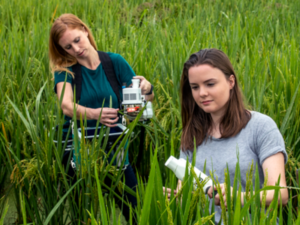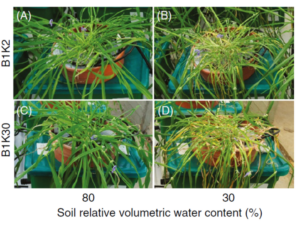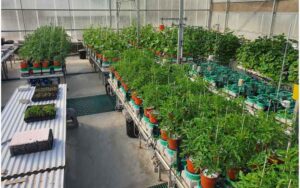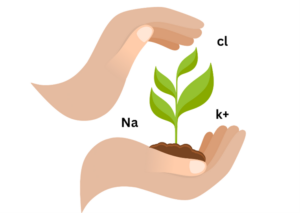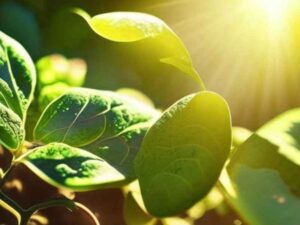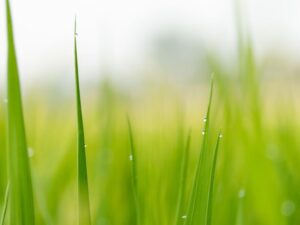What are stomata?
Plant stomata are specialized structures found on the surfaces of leaves, stems, and other aerial parts of plants. These microscopic openings play a crucial role in regulating gas exchange and water vapor.
When we have discovered the plant stomata?
The discovery of stomata, the microscopic openings on the surfaces of plants, is a fascinating journey that spans several centuries. The understanding of these structures and their role in plant physiology has evolved through the observations and investigations of numerous scientists over time.
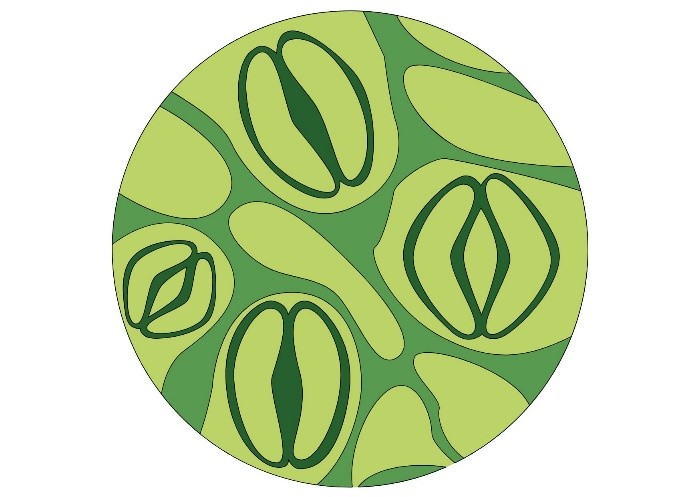
The first indications of stomata were observed by the Dutch scientist Jan Swammerdam in the 17th century. He noted tiny openings on the leaves of plants but did not fully comprehend their significance. It was not until the 19th centurythat significant advancements were made in the discovery and understanding of stomata. In 1827, the British botanist Robert Brown described the presence of small pores on the surfaces of plant leaves, which he named stomata, derived from the Greek word “stoma” meaning mouth. However, the function and significance of these stomata were not yet fully understood.
The German botanist Hugo von Mohl made notable contributions to the discovery and understanding of stomata in the mid-19th century. In 1837, von Mohl observed the behavior of stomata, noting their opening and closing under different environmental conditions. He also proposed that these openings were involved in gas exchange between plants and the atmosphere.
The Swedish scientist Gustav Nylander conducted extensive research on stomata in the mid-19th century. He developed techniques to observe stomatal structure using various staining methods. Nylander’s observations led to a better understanding of the structure and distribution of stomata in different plant species.
Further advancements came with the advent of microscopy. The German botanist Nathanael Pringsheim made significant contributions to stomatal research in the late 19th century by using high-resolution microscopes to study their structure in detail. His studies provided valuable insights into the morphology and arrangement of guard cells, subsidiary cells, and the stomatal pore.
In the early 20th century, the Russian botanist Boris Bukinich conducted experiments on stomatal movements, further elucidating their regulation. He observed that stomata respond to environmental cues, such as light and humidity, by opening and closing, thus controlling gas exchange and transpiration.
What Modern Research Techniques Furthered our Understanding of Stomata?
Modern research techniques, including advanced microscopy, molecular biology, and physiological studies, have further enhanced our understanding of stomata. Scientists have unraveled the molecular mechanisms involved in stomatal regulation, such as the role of hormones, ion channels, and signaling pathways.
What Implications does the Discovery of Stomata Have?
The discovery and understanding of stomata have had profound implications in plant physiology, ecology, and agricultural sciences. Stomata are crucial for photosynthesis, water regulation, and adaptation to environmental stresses. They play a pivotal role in plant productivity, water use efficiency, and global climate patterns. The continuous efforts of numerous scientists over centuries have allowed us to appreciate the significance of stomata and their intricate regulation. The discovery of stomata and their subsequent study has laid the foundation for further exploration of plant biology and has paved the way for advancements in crop improvement, water management, and climate change mitigation strategies.
What gas exchange occurs through the stomata?
Gas exchange in plants is a fundamental process that allows for the uptake of carbon dioxide (CO2) and the release of oxygen (O2) during photosynthesis, as well as the release of water vapor (H2O) during transpiration. Stomata are specialized microscopic structures found on the surfaces of leaves, stems, and other plant organs, facilitating efficient gas exchange.
The stomata consist of two bean-shaped cells called guard cells that flank a central pore. These guard cells are responsible for regulating the opening and closing of the stomatal pore, thus controlling the rate of gas exchange. The process of gas exchange occurs through the diffusion of gases from areas of higher concentration to areas of lower concentration.
During photosynthesis, plants utilize sunlight to convert CO2 grand water into glucose and oxygen. To support this process, plants actively uptake CO2 through the stomata. The concentration of CO2 outside the plant is typically higher than that inside the leaf due to its consumption during photosynthesis. This concentration gradient drives the diffusion of CO2 into the leaf through the stomatal pores.
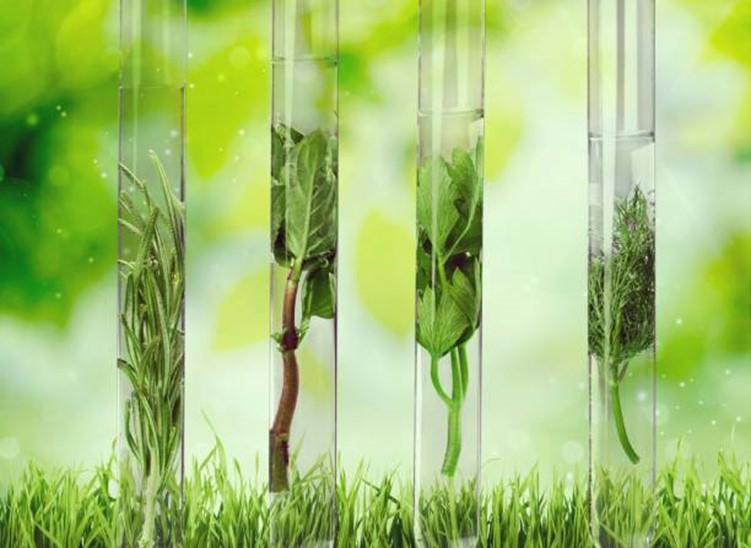
Simultaneously, oxygen, which is produced as a byproduct of photosynthesis, accumulates within the plant cells. The concentration of oxygen inside the plant becomes higher than that in the surrounding environment, establishing a concentration gradient that allows for the diffusion of oxygen out of the leaf through the stomata and into the atmosphere.
In addition to gas exchange, stomata also play a crucial role in regulating transpiration, the process by which plants lose water vapor to the atmosphere. Water is absorbed by the roots and transported through the plant’s vascular system to reach the leaves. Once in the leaves, water molecules evaporate from the moist surfaces of the leaf cells into the air spaces, creating a water vapor concentration gradient. This gradient drives the diffusion of water vapor from the leaf to the atmosphere through the stomata, thus facilitating transpiration. The rate of gas exchange through stomata is influenced by various factors, including environmental conditions and plant physiology.
What environmental factors that influence stomatal conductance in plants?
1. Light intensity: Stomatal conductance is generally higher in response to higher light levels, as plants require more carbon dioxide for photosynthesis under optimal light conditions.
2.Temperature: Warmer temperatures can lead to increased stomatal conductance due to enhanced rates of diffusion. However, excessively high temperatures can cause stomatal closure to conserve water and prevent overheating.
3.Relative humidity: Stomatal conductance is influenced by relative humidity levels in the surrounding environment. Lower humidity can trigger stomatal closure to reduce water loss through transpiration, while higher humidity levels can promote stomatal opening.
4.Atmospheric carbon dioxide (CO2) concentration: Elevated levels of atmospheric CO2 can lead to reduced stomatal conductance, as plants require less CO2 when it is readily available. This reduction in stomatal conductance helps conserves water.
5.Water availability: Stomatal conductance is closely linked to plant water status. Under conditions of water stress, plants often exhibit reduced stomatal conductance to conserve water and minimize dehydration.
6.Air pollutants: Certain air pollutants, such as ozone and sulfur dioxide, can affect stomatal conductance. High levels of pollutants can induce stomatal closure, limiting gas exchange and potentially impacting plant growth and productivity.
7.Wind: Strong winds can increase the rate of transpiration and, consequently, stomatal conductance. Wind can also influence stomatal behavior through physical movement and stimulation of mechanoreceptors in the leaves.
8.Atmospheric pressure: Changes in atmospheric pressure can affect stomatal conductance, although the impact is relatively minor compared to other environmental factors.
It’s important to note that the specific responses of stomatal conductance to these environmental factors can vary among plant species and environmental conditions. Additionally, plants exhibit various adaptive strategies to optimize gas exchange and water use efficiency in response to these environmental cues.
Overall, gas exchange in plants through the stomata is a finely regulated process that ensures the uptake of CO2 for photosynthesis, the release of oxygen, and the control of transpiration. The stomatal aperture adjusts dynamically in response to environmental cues and internal plant signals to optimize gas exchange rates, water use efficiency, and overall plant performance.
How salinity stress affects stomatal conductance through multiple mechanisms?
Salinity stress affects stomatal conductance through multiple mechanisms. High salt concentrations in the soil can disrupt the water potential gradient between the soil and plant roots, leading to reduced water uptake by plants. As a result, the water availability within the plant decreases, triggering stomatal closure as a protective response to conserve water. This closure restricts gas exchange and reduces transpiration, but it also limits the entry of toxic salts into the plant, preventing further damage.
Furthermore, salinity stress alters the osmotic balance within plant cells, affecting the turgor pressure of guard cells, which control stomatal opening and closing. Elevated salt levels can disrupt the delicate balance of ion homeostasis in guard cells, leading to alterations in their shape and function. These changes can result in impaired stomatal opening, further contributing to reduced stomatal conductance.
What implications do the unique features of guard cells have on stomatal conductance in plants and global climate patterns?
The outer surface of the guard cells is typically convex, while the inner surface is concave. This unique morphology allows the guard cells to swell and shrink, controlling the opening and closing of the stomatal pore. The concave side of the guard cells contains specialized thin areas called the stomatal pores, which form the actual opening for gas exchange. Surrounding the guard cells are subsidiary cells, which provide structural support and assist in stomatal functioning. These cells are irregularly shaped and vary in number and arrangement depending on the plant species.
How Do Stomata Vary Among Different Plant Species?
The size and density of stomata vary among plant species and can even differ between the upper and lower leaf surfaces. Generally, plants in arid environments have fewer stomata per unit area compared to those in moist environments, as a reduced stomatal density helps to minimize water loss. Stomatal structure also includes accessory cells, known as epidermal cells, which surround the guard cells and subsidiary cells. Epidermal cells form a protective layer on the leaf surface and help prevent excessive water loss. They also play a role in reflecting excess light and reducing heat absorption.
The stomatal conductance is regulated by the coordinated action of various molecular mechanisms, including the sensing of environmental signals by specialized cells called guard cells, which surround each stoma and control its opening and closing. When environmental conditions favor photosynthesis, such as high light and adequate water availability, guard cells take up potassium ions (K+) and water, leading to an increase in turgor pressure and subsequent swelling of the guard cells. This swelling causes the stomatal pore to open, allowing for the influx of carbon dioxide and the release of oxygen and water vapor.
Conversely, under conditions of water stress or high levels of atmospheric carbon dioxide, guard cells decrease their uptake of potassium ions and water, resulting in a loss of turgor pressure and subsequent shrinkage of the guard cells. This shrinkage causes the stomatal pore to close, reducing water loss through transpiration and preventing the entry of excess carbon dioxide.
What is the role of the hormones in stomatal regulation?
Hormones play a significant role in the regulation of stomatal behavior, controlling the opening and closing of stomata in response to various internal and external signals. Several hormones have been identified to be involved in stomatal regulation, including abscisic acid (ABA), auxins, cytokinins, and brassinosteroids. Each hormone has specific functions and interacts with other signaling molecules to coordinate stomatal responses.
Abscisic acid (ABA) is a key hormone in stomatal regulation, particularly during water stress conditions. When plants experience water deficit, ABA levels increase, leading to stomatal closure. ABA is synthesized in response to environmental cues such as drought, high salinity, and low humidity. It triggers a series of cellular events that result in the loss of turgor pressure in guard cells, causing stomatal closure and reducing water loss through transpiration.
How do auxins influence stomatal regulation, and how do they interact with ABA?
Auxins, primarily indole-3-acetic acid (IAA), also influence stomatal regulation. Auxins promote stomatal opening by stimulating the uptake of potassium ions (K+) into guard cells, leading to increased turgor pressure and stomatal aperture. Additionally, auxins interact with ABA signaling pathways to fine-tune stomatal responses, particularly in response to light.
Cytokinins are another group of hormones involved in stomatal regulation. They promote stomatal opening by enhancing the synthesis and signaling of nitric oxide (NO), which in turn activates guard cell ion channels, leading to stomatal opening. Cytokinins also interact with ABA signaling to modulate stomatal responses under specific conditions. Brassinosteroids (BRs) are steroid hormones that play a role in stomatal regulation, particularly during stress conditions. BRs can induce stomatal closure in response to drought stress, high salinity, or pathogen attack. They regulate the activity of ion channels and transporters in guard cells, affecting the movement of ions and water, thereby influencing stomatal behavior.
In what ways do reactive oxygen species (ROS) and calcium ions (Ca2+) regulate stomatal behavior?
The interactions between these hormones and their signaling pathways form a complex network that modulates stomatal responses to environmental cues. Hormones can act synergistically, antagonistically, or independently to fine-tune stomatal aperture, ensuring optimal gas exchange and water use efficiency. Furthermore, hormonal regulation of stomatal behavior is integrated with other signaling molecules, such as reactive oxygen species (ROS) and calcium ions (Ca2+). ROS and Ca2+ function as secondary messengers in stomatal signaling, relaying information from hormones and environmental cues to initiate cellular responses.
Understanding the role of hormones in stomatal regulation is crucial for unraveling the mechanisms underlying plant responses to environmental stresses and optimizing water use efficiency in agricultural systems. Manipulating hormonal signaling pathways holds potential for developing crop varieties with improved stress tolerance, enhanced water use efficiency, and increased productivity.
What is the connection between the stomata and plant invasiveness?
Stomatal conductance, the regulation of gas exchange through stomata, can influence plant invasiveness, which refers to the ability of certain plant species to spread rapidly and outcompete native vegetation in new habitats. Stomatal conductance plays a significant role in the success of invasive plants by influencing their physiological performance and competitive advantage. Invasive plants often exhibit high stomatal conductance, which allows for efficient uptake of carbon dioxide (CO2) and photosynthetic activity. This high stomatal conductance enables invasive plants to maximize their carbon assimilation and growth potential, giving them a competitive edge over native plants. By rapidly capturing resources, invasive species can outcompete native plants for light, nutrients, and water, leading to their dominance in the invaded ecosystem.
What factors influence invasive plants’ ability to maintain high stomatal conductance?
The ability of invasive plants to maintain high stomatal conductance is influenced by several factors. One important factor is the efficient regulation of stomatal opening and closing. Invasive plants may possess a higher sensitivity to environmental cues that trigger stomatal opening, such as light intensity, temperature, and atmospheric CO2 concentration. This heightened sensitivity allows them to respond quickly and optimize their gas exchange rates, facilitating their growth and reproductive success. Additionally, invasive plants often possess anatomical and physiological traits that promote high stomatal conductance. For example, they may have a higher stomatal density, meaning a greater number of stomata per unit leaf area, which increases the overall gas exchange capacity. This increased stomatal density allows for greater CO2 uptake and water vapor release, supporting enhanced photosynthesis and transpiration rates.
Furthermore, invasive plants may exhibit characteristics that reduce water loss through stomata, such as a thicker cuticle or specialized leaf structures. These adaptations help to maintain high stomatal conductance while minimizing water stress, enabling invasive plants to thrive in diverse environments and tolerate fluctuating conditions.
How does the relationship between stomatal conductance and plant invasiveness impact ecosystem dynamics?
The relationship between stomatal conductance and plant invasiveness is also influenced by the invasive plant’s response to biotic interactions. Invasive plants may have a competitive advantage over native species in terms of resource acquisition and utilization, partially due to their high stomatal conductance. This advantage allows invasive plants to outcompete native plants for limited resources, impacting biodiversity and ecosystem functioning. Moreover, the relationship between stomatal conductance and plant invasiveness can be further influenced by soil nutrient availability. Invasive plants often exhibit traits that enhance nutrient uptake efficiency, allowing them to utilize available nutrients effectively. This nutrient-use efficiency is closely linked to stomatal conductance, as it influences the plant’s capacity to acquire carbon and allocate resources towards growth and reproduction.
For conservation and management, why is understanding stomatal conductance so important?
Understanding the relationship between stomatal conductance and plant invasiveness is crucial for effective management and control of invasive species. By targeting the physiological traits associated with stomatal conductance, such as stomatal density, sensitivity to environmental cues, and water-use efficiency, it may be possible to develop strategies to mitigate the spread and impact of invasive plants. Additionally, investigating the role of stomatal conductance in invasive plant success can contribute to our understanding of the mechanisms underlying plant invasions and ecosystem dynamics. It provides insights into the physiological processes that drive plant invasiveness, facilitating the development of conservation strategies and the restoration of invaded ecosystems.
In summary, given the critical importance of stomatal conductance in plant physiology, ecology, and climate dynamics, extensive research efforts are devoted to unraveling the underlying mechanisms and developing strategies to manipulate stomatal behavior to enhance crop productivity, improve water use efficiency, and mitigate the impacts of climate change on agricultural systems.
How our PlantArray system can measure stomatal conductance?
The PlantArray Plant Ditech system measures the whole plant’s canopy stomatal conductance (GSc). This describes the gaseous flux of water that passes through the stomata relative to the partial pressure difference of the water vapor in g water/g plant/min. It is calculated by dividing the transpiration rate of each plant normalized to the plant weight and divided by the ambient vapor pressure deficit (VPD) measured by a weather station.
The daily GSc patterns represent the stomata’s response to the ambient conditions (i.e., GSc is higher under low VPD conditions and decreases as VPD increases, assumed to prevent leaf desiccation. The accuracy of our measurements was confirmed by gas-exchange apparatuses used to simultaneously measure plants grown in parallel to the plants on the lysimeters, which yielded similar absolute values (Halperin et. Al., (2016)).

